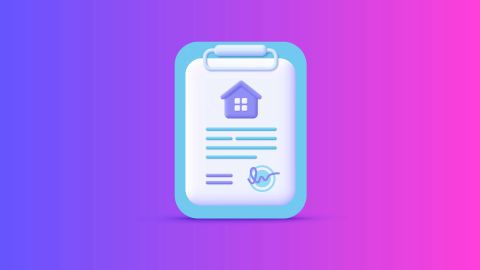In this guide, we will walk you through the steps to write a clear and professional home loan closure letter.
What is a home loan closure letter?
A home loan closure letter is a formal document sent to your lender when you have finished repaying your home loan. It acts as a request to close the loan account and return all property-related documents.This letter ensures that the lender initiates the loan closure process and provides you with a “No Objection Certificate” (NOC) and other relevant documents.
Why is a home loan closure letter important?
- Proof of loan completion: It serves as written proof that you have requested the loan closure.
- Legal requirement: It initiates the release of your property documents from the lender.
- NOC issuance: The lender issues a No Objection Certificate, which confirms the loan is closed and the lender has no claim on the property.
- Clears your credit records: Closing the loan formally ensures your credit report reflects a closed loan, improving your financial profile.
What to include in a home loan closure letter?
Your letter should cover the following details:- Your full name and address
- Loan account number
- Property address
- Final payment details (date and amount)
- Request for the NOC and property documents
- Contact details for follow-up
How to write a home loan closure letter
Here is a step-by-step guide to writing a home loan closure letter:Step 1: Gather necessary information
Before drafting your letter, collect the following details:- Loan account number
- Borrower’s name (as mentioned in the loan account)
- Property details
- Repayment details (final payment date and amount)
Step 2: Use a formal format
Your home loan closure letter should follow a formal business letter format. Include:- Your name and contact details
- Date
- Lender’s name and address
Step 3: Write a clear subject line
The subject line should mention the purpose of the letter, such as:- “Application for home loan closure”
- “Request to close home loan account [Loan Account Number]”
Step 4: Draft the body of the letter
The body of your letter should be concise and to the point.- State the purpose: Mention that you have completed your loan repayment and wish to close the account.
- Include key details: Add your loan account number, property details, and final payment information.
- Request for necessary documents: Ask for the NOC and original property documents.
- Express gratitude: Thank the lender for their services.
Step 5: Attach supporting documents
Along with your letter, attach the following:- Proof of final payment (e.g., receipt or transaction ID)
- Copy of the loan agreement (if required)
- A valid ID proof
Step 6: Submit the letter
Send your letter and attachments to the lender’s branch. You can deliver it in person or via post. Some lenders also accept digital submissions through email.What happens after you submit the letter?
Once the lender receives your home loan closure letter, they will verify the details and process the loan closure. This includes:- Issuing the NOC
- Returning original property documents
- Updating your credit report to show the loan as closed
Tips for writing a home loan closure letter
- Be clear and concise: Avoid lengthy explanations; focus on the essential details.
- Check for accuracy: Ensure all loan account and payment details are correct.
- Attach proofs: Always attach proof of the final payment to avoid delays.
- Use polite language: Maintain a courteous tone throughout the letter.
Common mistakes to avoid
- Providing incomplete information: Missing out on details like your loan account number or property address can delay the process.
- Not attaching proof of payment: Always include evidence of the final repayment.
- Ignoring follow-ups: Keep in touch with the lender to ensure the closure process is on track.




